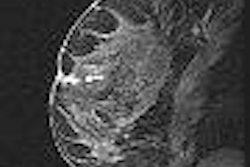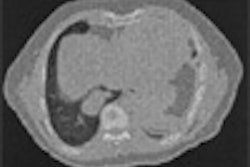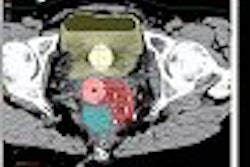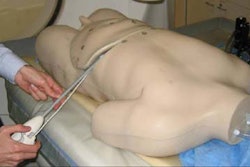For patients with common extensor tendinosis of the elbow, physical therapy often resolves the pain and disability. But for those who need more help, an ultrasound-guided percutaneous technique is proving to be an effective alternative to surgery.
Dr. Levon Nazarian from Thomas Jefferson University in Philadelphia presented the latest results from his ongoing practice of US-guided needle tenotomy at the 2005 RSNA meeting in Chicago, focusing this time on patients afflicted with so-called tennis elbow.
The latest study was a retrospective follow-up with 58 consecutive patients who had undergone the US-guided technique in the elbow.
Prior to their procedures, all had symptoms of chronic pain and disability for at least three months. Each patient had also failed to improve from treatment with at least three of the following approaches: nonsteroidal anti-inflammatory drugs, localized corticosteroid injection, bracing, splints, and physical therapy.
The percutaneous tenotomy is a less-invasive riff on an older surgical approach, in which the tip of a scalpel was used to release the tendon fibers and induce a healing response at the insertion of the common extensor tendon and the lateral epicondyle.
Under aseptic conditions, around 10 to 15 cc of local anesthetic (lidocaine or bupivacaine) are administered to the affected area. An 18- or 20-gauge needle is then advanced through the abnormal region of the tendon. The 18-gauge was preferred if there were large calcifications to be broken up, Nazarian said.
"With the needle we fenestrated -- we basically opened windows to the tendon along a long axis," he said. "We also abraded the edge of the bone, because when surgeons operate on tendinosis, they always use their scalpel to abrade the bone and the periosteum to stimulate new blood vessels."
The needle is drawn back and forth until it appears that all of the abnormal tendon has been treated and when its texture has gone "from a gritty, rubbery texture to a more soft texture," Nazarian said.
The tip of the needle is also used to chip away at any calcification or spurs, he added.
Nazarian said he typically spends about a half-hour on the procedure. For patients, the experience is akin to a teeth cleaning, Nazarian said. "They don't feel pain. They just feel abrasion; they feel the pressure. But they basically just sit and watch it, and kind of enjoy watching it."
Starting from the first night after the procedure, the patients engage in two weeks of stretching and range-of-motion exercises, followed by six to 10 weeks of physical therapy and gradual strengthening before resuming all normal activities.
As for outcomes, 55 of the 58 patients (95%) were reached for a telephone survey about their results at an average of 28 months postprocedure. Of those, 63% reported excellent outcomes, 16% good, 7% fair, and 13% poor (little or no improvement) outcomes.
There was no effect on the outcome based on patient age, length of symptoms prior to procedure, the time from procedure to follow-up, or whether the procedure was done on a dominant or nondominant arm.
None of the patients experienced a major complication. A total of 85%, including some who experienced little or no improvement, said they would refer a friend or close relative for the procedure.
Overall, US-guided percutaneous needle tenotomy for lateral elbow tendinosis is a safe and effective outpatient procedure, Nazarian concluded. "For patients who have failed all other nonsurgical treatments for this condition and who are considering surgery, this procedure may represent a viable alternative."
By Tracie L. Thompson
AuntMinnie.com staff writer
January 24, 2006
Related Reading
Radial head-capitellum view best as adjunct in elbow x-ray, March 9, 2005
Musculoskeletal ultrasound on the rise, may yield cost savings, January 31, 2003
US-guided needle therapy provides quick relief for joint injuries, December 5, 2002
The bends and flexures of forearm and elbow x-ray positioning, November 21, 2002
Copyright © 2006 AuntMinnie.com



















